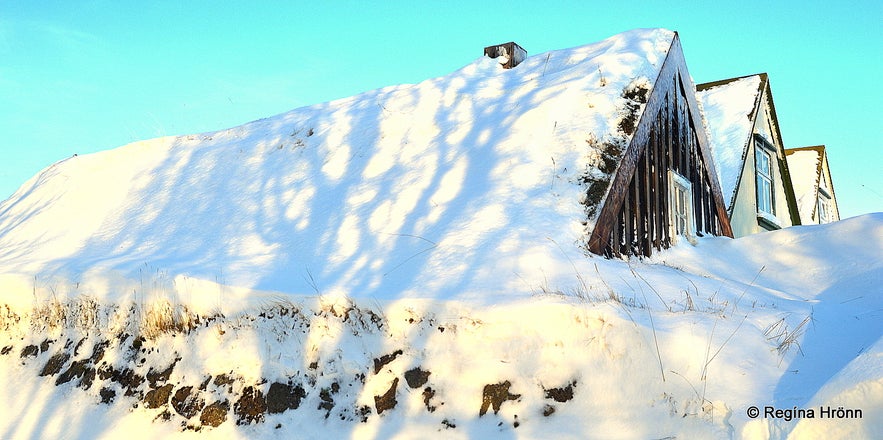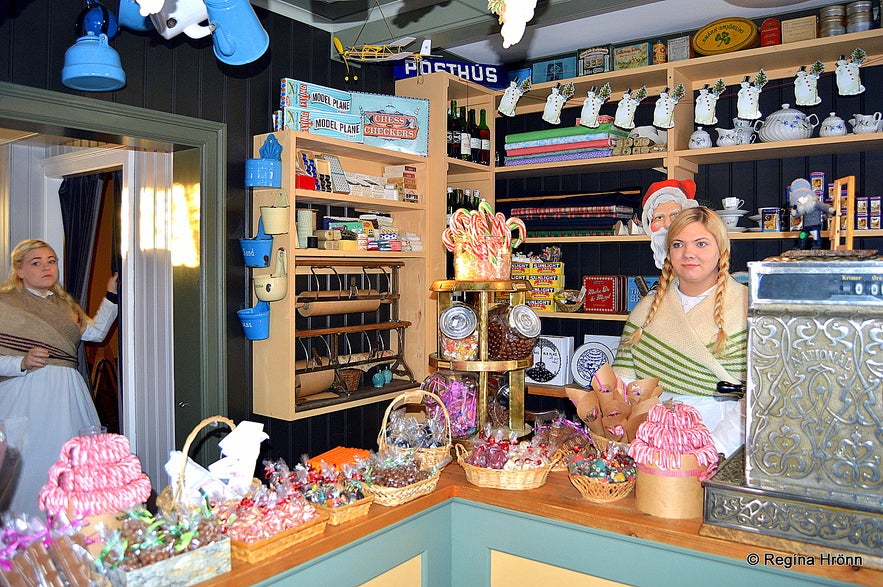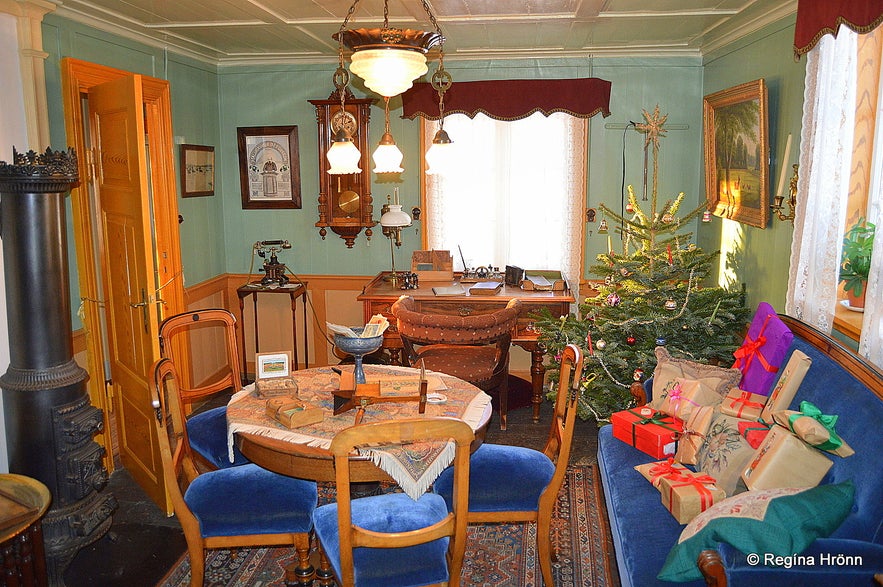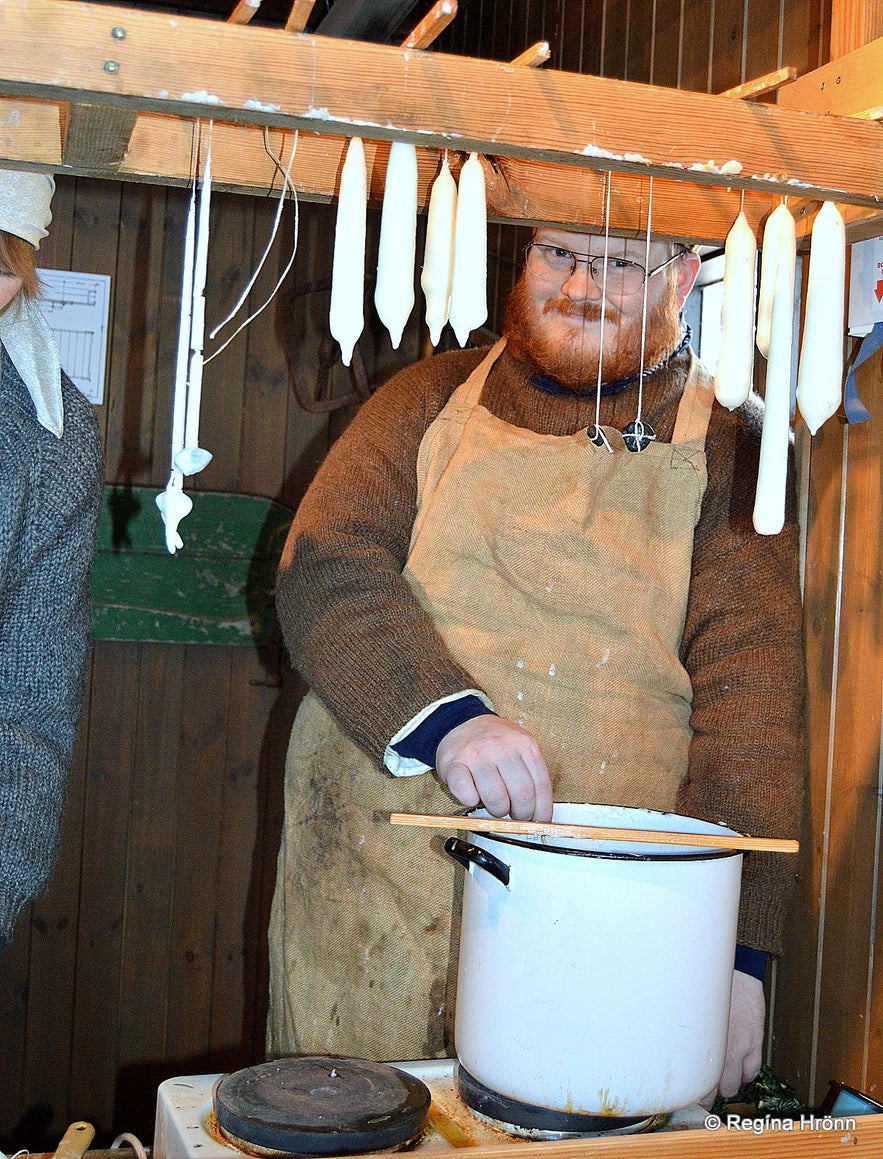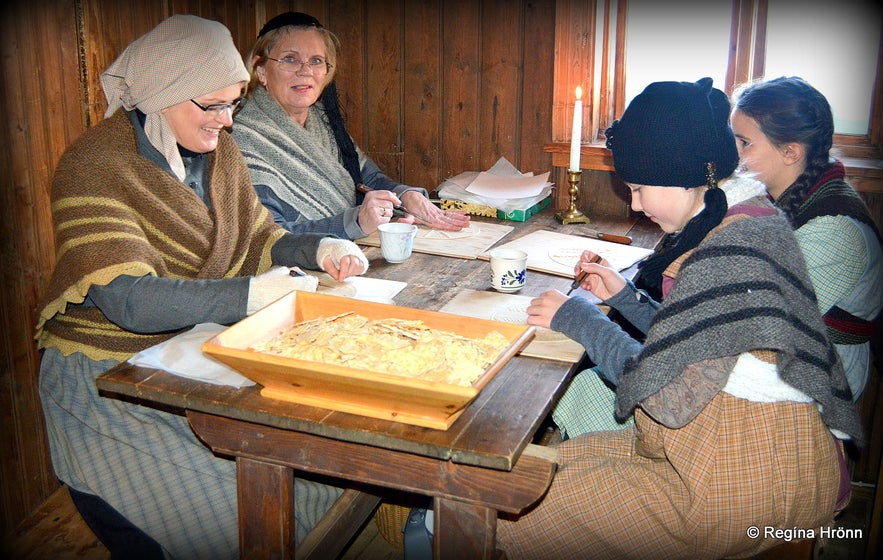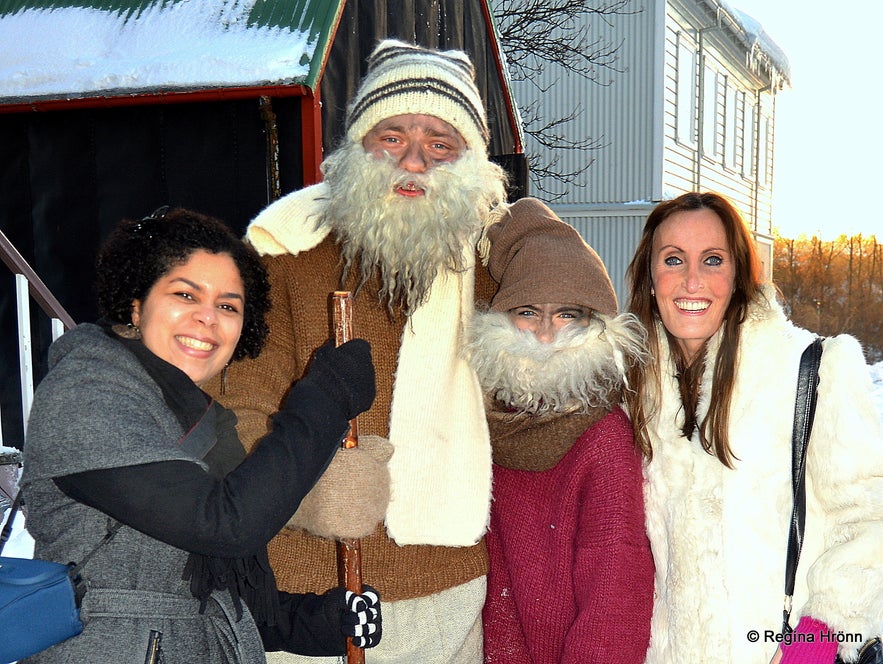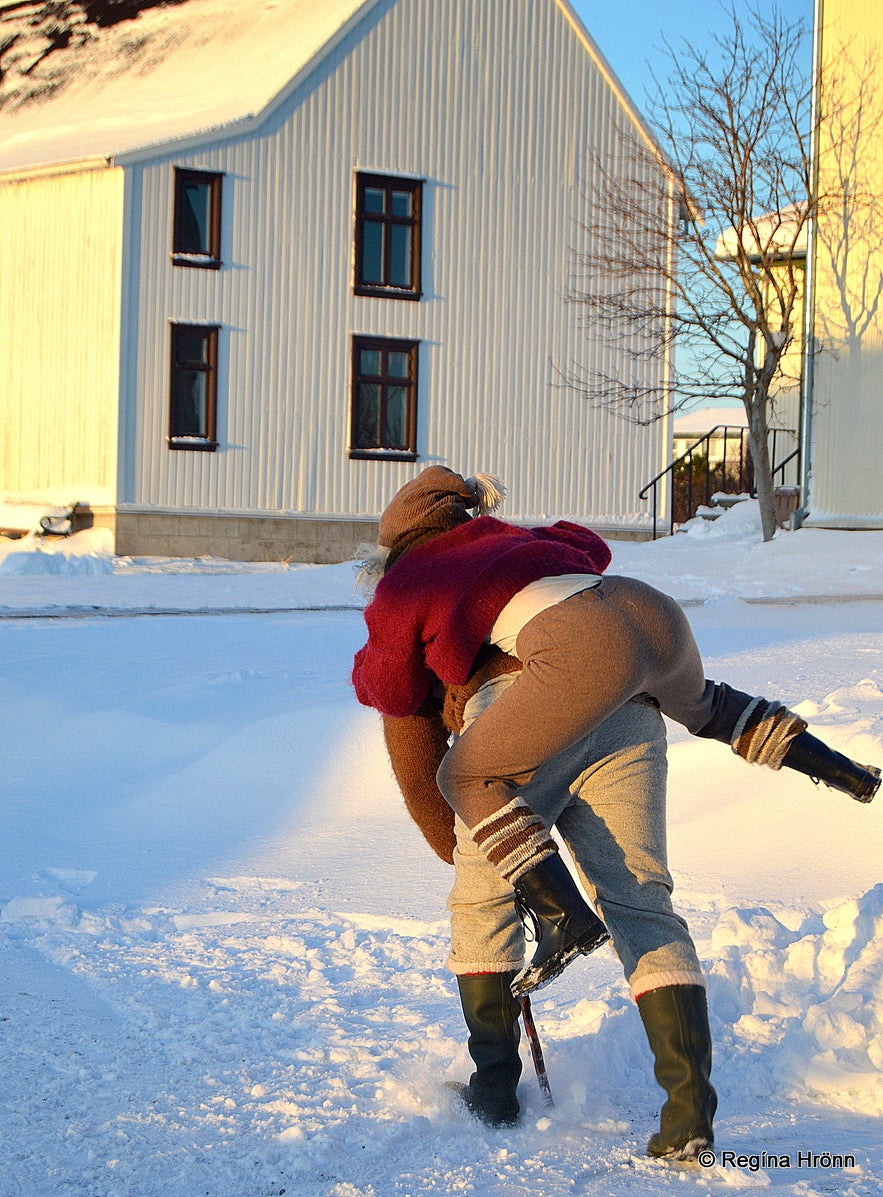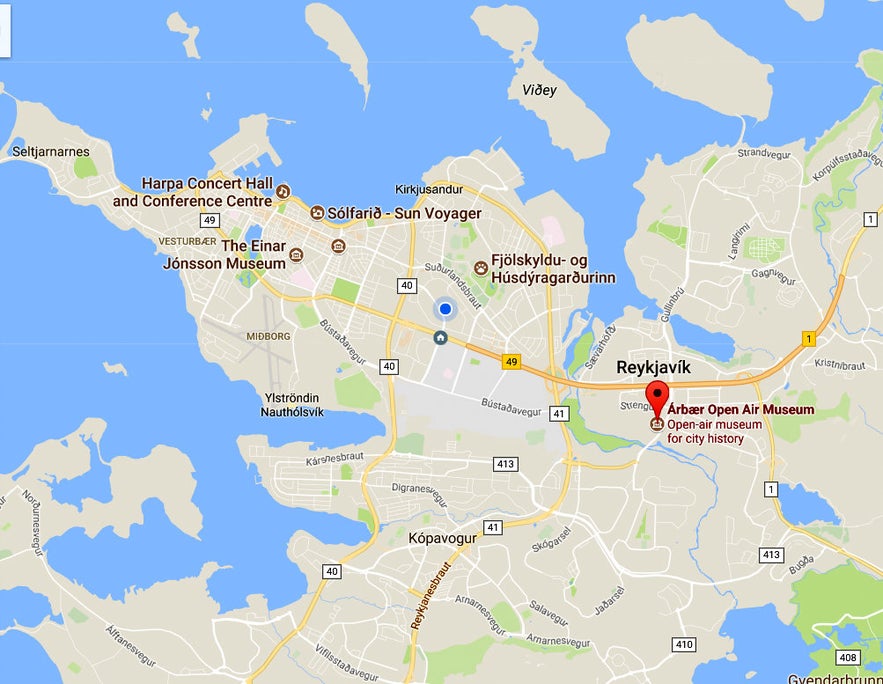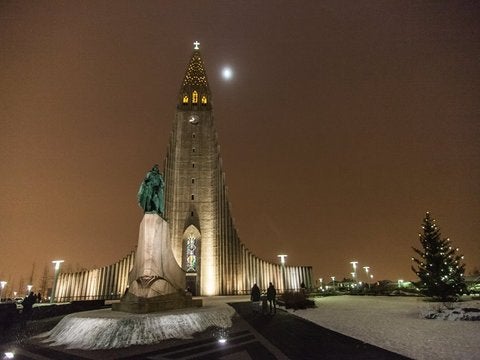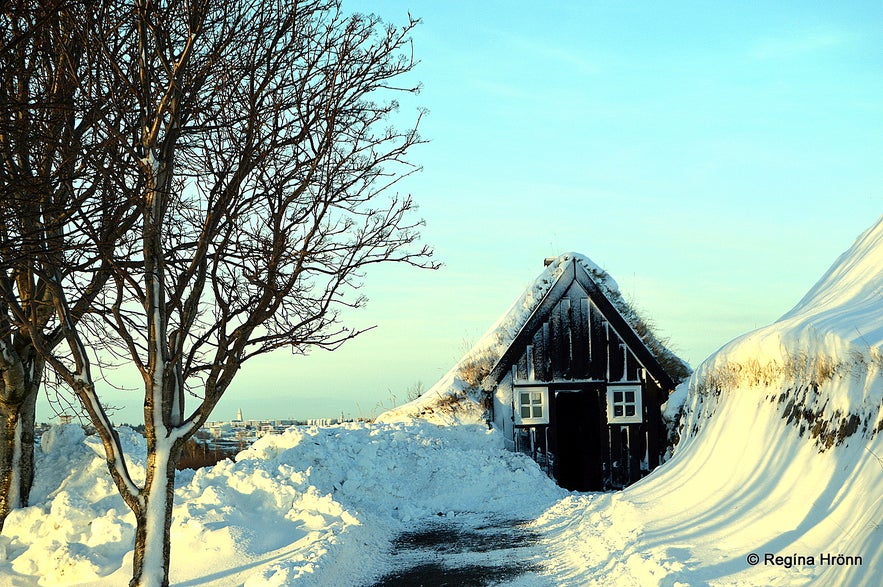
Árbæjarsafn Museum is a wonderful must-see open-air museum here in my hometown Reykjavík. The museum is are open all year round and you can join guided tours in English every day at 1 pm at the museum.
Árbæjarsafn Museum was opened in 1957 and is part of the Reykjavík City Museum.
On your visit to the museum, you will see old houses, which have been moved to Árbæjarsafn Museum from the old centre of Reykjavík, to preserve them and exhibit them. Most of the houses are fully furnished, but some of them host exhibitions. Here you can see and learn about the lifestyle of old Reykjavík.
Turf houses at Árbæjarsafn
There are some 20 houses at Árbæjarsafn Museum, and the largest buildings are around the square. Further south you will find cute small timber houses.
Here you can see one of the few remaining turf houses in Iceland, Árbær turf farm, the only remaining turf farm in Reykjavík, which was inhabited until 1948. The first written records of a farm at Árbær dates back to 1464, but the turf houses at Árbæjarsafn Museum were built around 1890-1918 and have been reconstructed through the years.
Turf houses need constant maintenance due to the nature of their building material; turf, rocks and timber.
The turf church at Árbæjarsafn
I will write a separate travel-blog about these turf houses at Árbær with photos from the inside as well, as I think that each and every turf house in Iceland deserves a special travel-blog :) I have written a list of all the turf houses I have visited on my travels around Iceland.
You will find a lovely little turf church at Árbæjarsafn Museum. It is one of very few remaining turf churches in Iceland, a reconstruction of an older turf church. The original turf church was located at Silfrastaðir in Skagafjörður in North-Iceland, built in 1842, and torn down in 1896.
The turf vestry opposite the turf church at Árbæjarsafn
Parts of the timber was used in a baðstofa, the sitting room, in the farm on the churchyard. That baðstofa was torn down in 1959 and the timber from it was used to build the turf church at Árbæjarsafn Museum in the original form of the old church in Skagafjörður.
It is quite a cute little turf church :) I have added separate travel-blogs about all the turf churches in Iceland, as I adore these little turf churches. They are very delicate though and cannot withstand too much traffic.
Photo in Krambúðin taken at Christmas time
The church was consecrated in 1960. Its sister-church is one of the most beautiful turf churches in Iceland, Víðimýrarkirkja church in Skagafjörður (1834-1835). The lovely little turf house west of the turf church (my photo above) is the vestry (built in 1964).
During the Christmas opening, you can join a service in the turf church at 14:00.

Photo in Krambúðin taken in the summertime
Krambúðin is a lovely store at the museum. It is the museum's General Store and here you can buy traditional confectionery and all kinds of Christmas stuff.
This store is one of my favourite buildings in Árbæjarsafn Museum and it is lovely being served by these girls dressed in traditional attire :)
Suðurgata 7
In the house from Suðurgata 7, one can get a peek into the way Christmas was celebrated a century ago, both by upper-class families and by families of lesser means.
My photo above shows the living room of an upper-class family.
Candle making at Árbæjarsafn
In the stable from Garðastræti candles were being made from sheep fat. The gentleman in the photo above showed us how to make such candles.
In Hábær hangikjöt or smoked lamb was being cooked, but hangikjöt is a Christmas delicacy here in Iceland. You get to taste the meat at the museum if you like.
Printing at Árbæjarsafn
You can also visit the friendly printer in Miðhús where Christmas greetings are being printed.
In Árbær turf house traditional laufabrauð "leaf-bread" was being made. This is a traditional custom, which we Icelanders still practise.
In my family, we always meet before Christmas to cut leaf bread. It is cut into patterns, which can be quite decorative, and deep-fried. You will be given samples to taste at the museum.
Leaf bread making at Árbæjarsafn
Laufabrauð is a paper-thin bread made out of wheat, whole-wheat, sugar, salt and milk/water and some add cumin to the recipe. The dough is flattened and cut in a round shape, then you make tiny holes in it with a fork and in my home, we run a special brass roller through it and flip over every second leave of the decorations, which were made with this roller, and fasten it.
You can make various decorations with the roller.
The bread is then deep-fried and flattened with a special wooden plate with a handle and a beautiful laufabrauð is made. Traditionally the laufabrauð is cut with knives.
With the Yule Lads at Árbæjarsafn
Finally, we ran into two of the Icelandic Yule Lads! They are very different from Santa Claus and true pranksters. Watch out as they are likely to play a prank on you. But they are good souls and they take part in the Christmas celebrations and play with the children.
I have written about the Icelandic Yule Lads in details in another travel-blog.
The Yule Lads at Árbæjarsafn
As I told you earlier then there are guided tours in English daily at 13:00. The museum is open during the summer months from 10:00-17:00. And the museum is now open in wintertime also, from 13:00-17:00. Check out their website for opening hours.
Visiting Árbæjarsafn museum in December is very popular amongst locals and if you find yourself in Reykjavík at this time of year I would recommend visiting this museum. I always visit this museum in December around Christmas time, it has become part of my Christmas celebration.
I will be writing another travel-blog about the summer opening at Árbæjarsafn Museum. But in the meantime here is a video I shot at Árbæjarsafn last summer; you see that it looks totally different in the summertime:
I would advise you to get the Reykjavík City Card if you plan on visiting more museums in Reykjavík during your visit.
It gives you access to Árbæjarsafn museum plus many more museums and galleries in Reykjavík, the swimming pools and buses.
To visit this museum, which is located at Kistuhylur 4 in Árbær suburb on the eastern side of Reykjavík, you can either take the bus or rent a car and drive to the suburb of Reykjavík.
Reykjavík is a small city so everything is close by and the drive to the museum from Hlemmur in the city centre is only 6.5 km.
Have a lovely time at the beautiful Árbæjarsafn Museum :)


